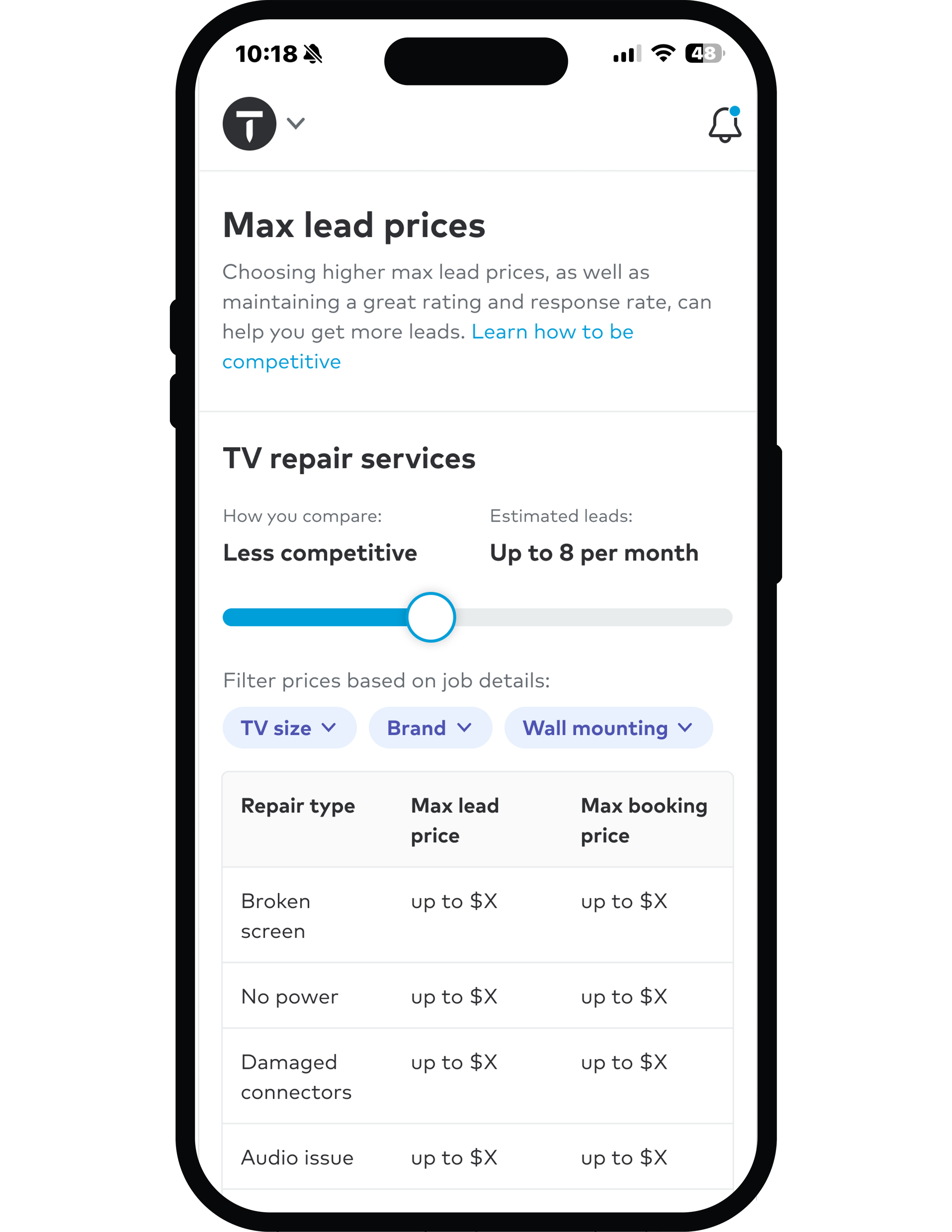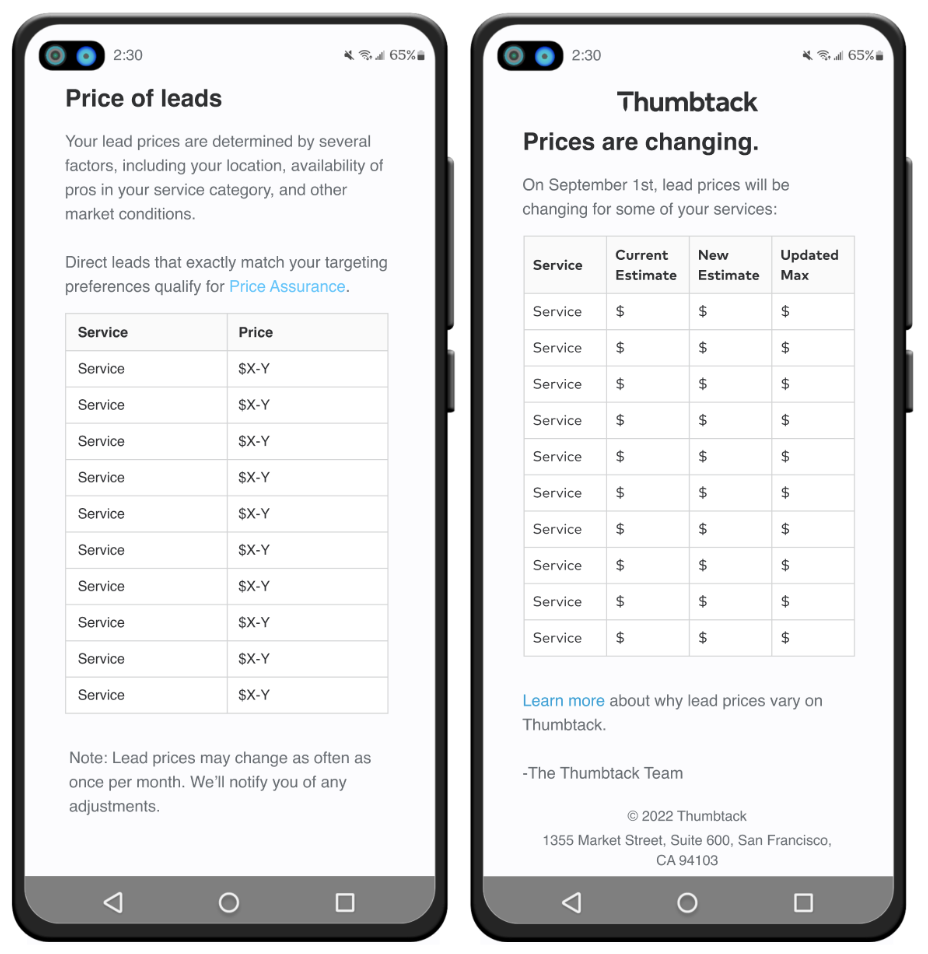Thumbtack: Set Your Own Prices
What’s Thumbtack?
Thumbtack is a two-sided marketplace that connects home care professionals (pros) and homeowners (customers).
Thumbtack Pro is an app that offers pros an affordable, easy way to win new customers.
What were users looking for?
In 2024, Thumbtack surveyed its pros and discovered that 84% wanted the opportunity for more leads (meaning, more prospective new jobs with new customers). And, 76% wanted more control over their weekly spending.
Pros needed a way to grow their business - to get in front of and win more customers on Thumbtack. They wanted to invest at a level that was comfortable for them financially, and got them the number of jobs they wanted.
What was our business need?
Thumbtack needed to retire a manual model of modulating lead prices on our own. We wanted to shift control of lead prices to pros, in the form of price competition. By doing so, we hoped pros would actually spend more per lead over time.
Our objective:
Build a new lead pricing product; test it; and iterate through 2-4 week sprints;
Motivate pros through the product to scale prices up on their own; and
Drive motivation through the notion of lead price competition.
Auditing the baseline
To see how the current content & interaction were working at the time, I signed up for Thumbtack Pro via our staging environment. In the app, I saw a set of pre-defined costs for each lead, in each service I offered as a pro.
Then, I triggered a series of price increases, just as Thumbtack might manually increase the price of certain leads in certain services to adjust for the market’s supply and demand.
I received an email from Thumbtack saying that prices in one or more of my pro services were going up. The CTA went to a variation of my pricing table, showing a set of old and new lead costs, and a date for when the change would occur.
A learn more link took me to a help center article, which reinforced the basic facts that 1) Thumbtack determines lead prices for pros, and 2) these prices may change anytime.
To further define the problem, I arranged this high-level evaluation of what worked and what didn’t:
Not working:
Lack of control:
Prices changed without my participation, at Thumbtack’s whim.
No way to set a budget:
I couldn’t create personal limits on how much to spend per lead, per week, etc.
No competition lever:
If I had a decent budget, how could I leverage that to compete with other pros?
Working:
Simplicity & automation:
Little to interact with. Mostly just information.
Clarity:
The pricing model and changes were communicated well & easy to understand.
Consistency with competitors:
This was also the way Yelp & Angi worked.




